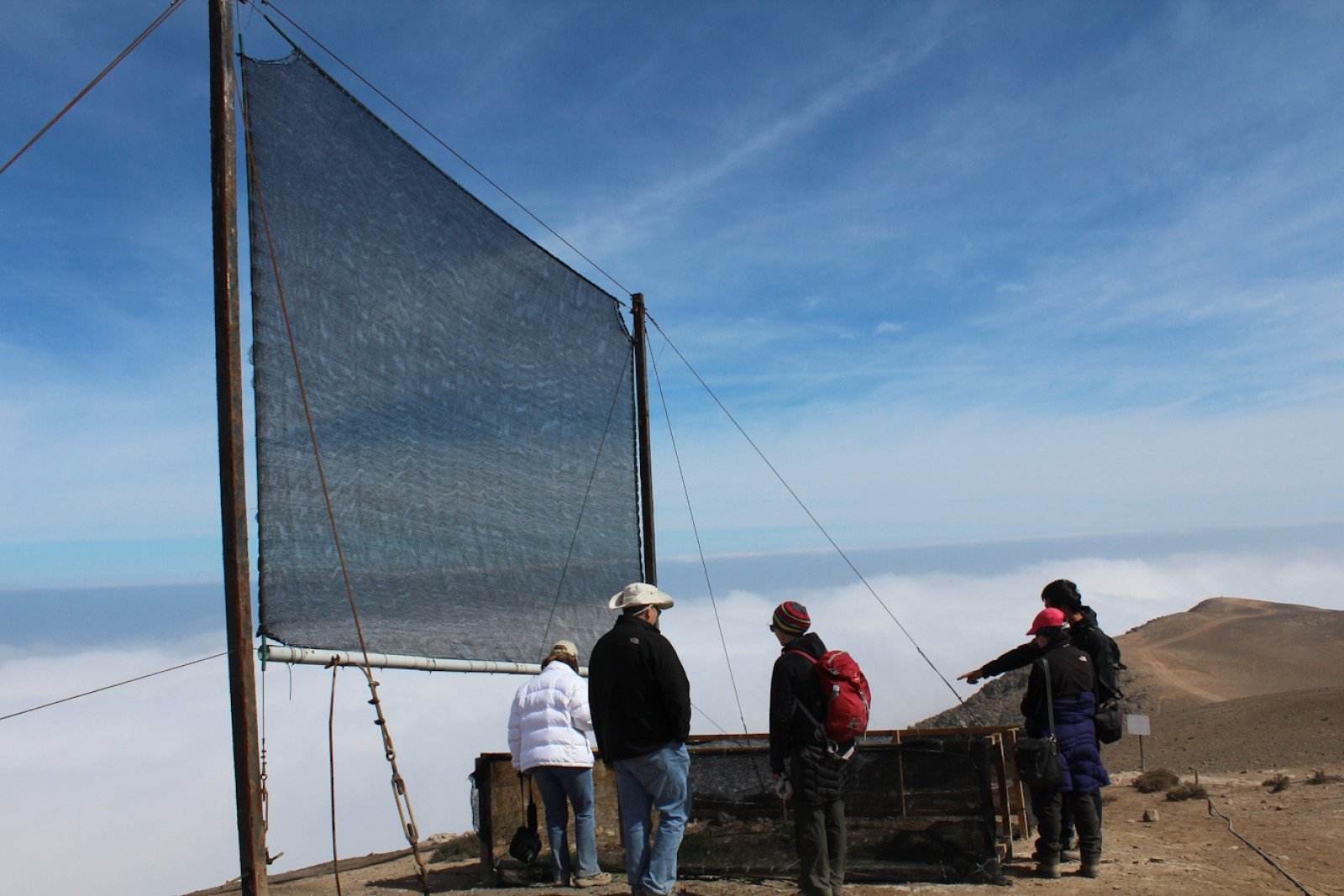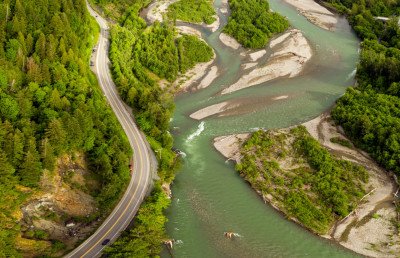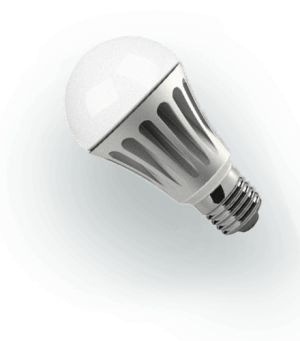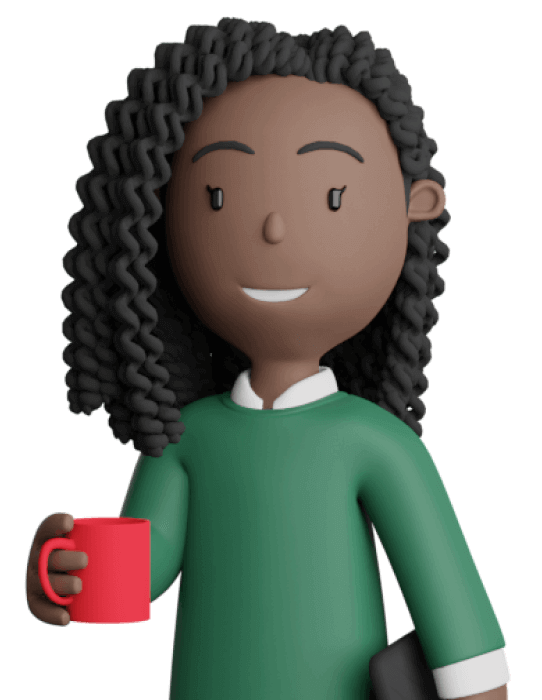Build a fog net
Learn about solutions for conserving water and electricity and make a fog net to explore their benefit in drought conditions. Image Sources: ew

Overview
In this activity students debate who should get priority to water in drought times and create tips for conserving water and electricity for various businesses. They will also build a fog net to understand how this simple technology can collect water from air.
Instructions
What you'll need
- Conserve and save money handout, print one class set
- Build a fog net slideshow
- 'Fog Nets' video from Facts5Minutes on YouTube
- Computer and projector to share video and slideshow
Experiment supplies
- Tape
- Scale
- Measuring cup
- Funnel
- For each pair of students:
- Wire coat hanger
- Section of nylon stockings 40-45 cm long
- Beaker or jar (500 mL or larger) filled with sand, soil, or gravel
- Clear misting spray bottle
Introduction
- Review how drought impacts communities and ecosystems, can lower hydroelectricity production and increase storm damage. We recommend doing the activities that are part of this unit: “Reporting on drought in B.C.” and “Drought, electricity, and storm safety in B.C.”
- Begin with a discussion on who should get priority to water. Write or draw on the board three items: a fish, a glass of water and a lightbulb. Explain that the fish represents the environment like trees, plants, animals, the glass of water represents human needs for water and the lightbulb represents electricity generation. Ask students who they think should get priority access to water in times of drought. Ask students to share their ideas and/or ask students to vote on who gets the priority to water.
- Share that BC Hydro has water use plans (WUP) for most hydroelectric facilities. The overall goal is to find a better balance between competing uses of water, such as domestic water supply, fish and wildlife, recreation, heritage, flood control and electrical power needs which are environmentally, socially and economically acceptable to British Columbians. Each WUP must address fish and aquatic protection, flood control, beneficial use of water, and heritage and cultural values.
Conserve and save money
- Water conservation becomes critical in times of drought, but for people and businesses, implementing water conservation practices all year round has environmental, economic and social benefits. In many municipalities, businesses pay for water, so water conservation means lower costs. Since most of our electricity in B.C. is generated using water there is also a strong link between saving electricity and saving water and in business this means lower costs too. Businesses may also use their conservation practices in advertisement of social and environmental responsibility. Water conservation means more water available for ecosystems, as well as for generating electricity.
- Divide students into six groups and explain that each group will be given a business type to analyze how water and electricity is used and how they can conserve.
- Start by getting students to share one idea for how water or electricity is used in each of the businesses: hotel, farm (agriculture and livestock), hospital, laundromat, supermarket, clothing manufacturer. An option is to have students do a visualization and imagine themselves in one of the businesses as they generate ideas. For example, students can close their eyes and picture the last time they walked through a supermarket. What did they see? How was energy and water being used?
- Next give each group one of the Conserve and Save Money handout pages with the different business types. Have the groups discuss how water and electricity is being used in the business and consider different conservation opportunities, then write one tip in the water and one in the electricity column. Set a timer for 4 minutes (adjust based on student needs).
- When the timer goes off, each group passes their paper to the group to the right and receives a new business type from the group to their left. Groups now decide on one conservation tip for this new business that is different from the one listed from the previous group. Reset the timer. Repeat until each group has had the chance to see consider all six businesses. More time may need to be added to additional rounds as the conservation ideas get more difficult. An option is to allow students to use devices to research the business types.
- Have each group present the ideas on the last business they discussed. See teaching notes for general examples and business specific examples that students might come up with.
Build a fog net
- Once all ideas have been captured ask students if they have heard of fog nets as an option to collect water in areas of drought. While rare in Canada currently, fog nets have been used in dry climates around the world.
- Show this video about fog nets and how they work: Fog Nets from Facts5Minutes on YouTube
- Tell students they will now work in pairs to make their own version of a fog net. Pull up the Build a Fog Net slideshow slideshow.
- At slide 2, have students gather their supplies: wire coat hanger, tape, nylon stocking, small beaker or jar filled with sand, soil, gravel or rocks. Then bend the wire coat hanger into a diamond shape and straighten the hook. Weigh the filled beaker in grams.
- At slide 3, pull the nylons over the wire diamond and secure with tape top and bottom. This is your fog net. Now secure the fog net in the beaker so it does not tip over and is vertical.
- At slide 4, have students make a prediction: when you spray water on your fog net what percentage of the water sprayed do you think will be collected?
- At slide 5, using the measuring cup and funnel take the bottle and fill it with 120 mL of water and using the mist setting spray it at the net. The water will collect on the surface of the net and travel down into the jar. Continue spraying till about half the water has gone (approximately 60 mL).
- At slide 6, weigh the beaker with soil again in grams. Calculate how much water was collected in grams. How many mL of water was collected? Remind students that 1 gram of water is equal to 1 mL of water. What percentage of the water sprayed did you collect in your net?
- At slide 7, wrap up by having a class discussion about the experiment, results, materials that could work and feasibility of fog nets in B.C.
Modify or extend this activity
Students could choose a business, research what they do, and create marketing to encourage these businesses to conserve water and electricity and save money. They could choose to write a jingle, create a flyer or a social media post.
Curriculum Fit
Science 9
Big ideas
- The biosphere, geosphere, hydrosphere, and atmosphere are interconnected, as matter cycles and energy flows through them.
Content
- Matter cycles within biotic and abiotic components of ecosystems
- Sustainability of systems
- First People’s knowledge of interconnectedness and sustainability
Curricular Competencies
Questioning and predicting:
- Demonstrate a sustained intellectual curiosity about a scientific topic or problem of personal interest
Processing and analyzing data and information:
- Apply First Peoples perspectives and knowledge, other ways of knowing, and local knowledge as sources of information. Analyze cause-and-effect relationships.
Assessments
- Assess students’ understanding of water as a shared resource and how BC Hydro’s uses WUPs to balance the competing uses of water.
- Observe students’ ability to think critically and creatively on how different business can conserve water and electricity.
- Evaluate how students followed instructions to create a functioning fog net.
- Optional: refer to the rubric evaluation tool created for this unit.
Teaching Notes
Conserve and save money activity
Examples of energy saving tips for businesses:
Some ideas are common to many businesses like low-flow toilets and showerheads, aerators on sinks, leak detectors, LED lighting and sensors, energy efficient appliances, thermostat-controlled heating and cooling, heat pumps to provide heating and cooling efficiently, good insulation and training staff to understand how the systems work efficiently. Other ideas might be more specific to the business like:
- Hotel: on-demand towel washing, optimal machine loads, drought resistant landscaping, room-card operated lighting, daylight sensors in public spaces.
- Farm (agriculture and livestock):environmental farm plans, drip irrigation, irrigation timing (mornings/evenings), row cover, drought resistant crops, capturing/storing rainwater, cover crops, organic farming, rotational grazing, shade constructs for water troughs, methane capture from livestock, replacing older equipment with higher efficiency equipment, proper maintenance of equipment, use of natural ventilation, variable frequency drives for irrigation.
- Hospital: high-efficiency cooling equipment, leak detection systems, high efficiency disinfector device (to disinfect instruments), drought resistance landscaping.
- Laundromat: high efficiency energy and water front-load machines, clean and maintain machines, checking and repairing leaks, assist customers with machine settings, offer discounts to wash in cold water, greywater recycling.
- Supermarket: maintain refrigerated and frozen food display cases (maintain the condensers, replace old water and prevent buildup of minerals on the coils), iceless seafood display cases, low-flow pre-rinse spray valves, rainwater collection, heat recovery from refrigeration systems for space heating.
- Clothing manufacturer: on-site water treatment and recycling, keep equipment and systems maintained, upgrade to energy and water efficient machines, install water meters and submeters to measure consumption and assess where savings can be made, circular economy strategies where end of life products go back to the manufacturer and made into new clothing, reduce packaging.
BC Hydro and Water Use Plans
Excerpt from BC Hydro’s Water Use Plans:
“Water use plans were developed for most of BC Hydro's hydroelectric facilities through a consultative planning process involving participants, such as government agencies, First Nations, local citizens and other interest groups.
The overall objective was to make recommendations to the B.C. Comptroller of Water Rights for incremental adjustments to our operations to benefit (or balance) power generation, fish, wildlife, cultural heritage, social (e.g., recreation), and other values.”
Take action
Check out the BC Government Drought preparation and response site.
- Review essential water uses, reduce non-essential water use
- Maximize water system efficiency
- Recycle water used in industrial operations
- Use water efficient methods and equipment
- Check all plumbing for leaks
- Maintain landscaping with grey water
- Install a water recirculating system
- Conduct a water audit
- Monitor water usage
- Implement water saving policies
- Install low flow devices
- Upgrade to water conserving fixtures for industrial use
- Replace high-volume hoses with high-pressure, low-volume cleaning systems
- Encourage employees to adopt water-saving behaviours
Header image source: Pontificia Universidad Católica de Chile on Flickr
Photographer: Nicole Saffie
Used under Creative Common license.







